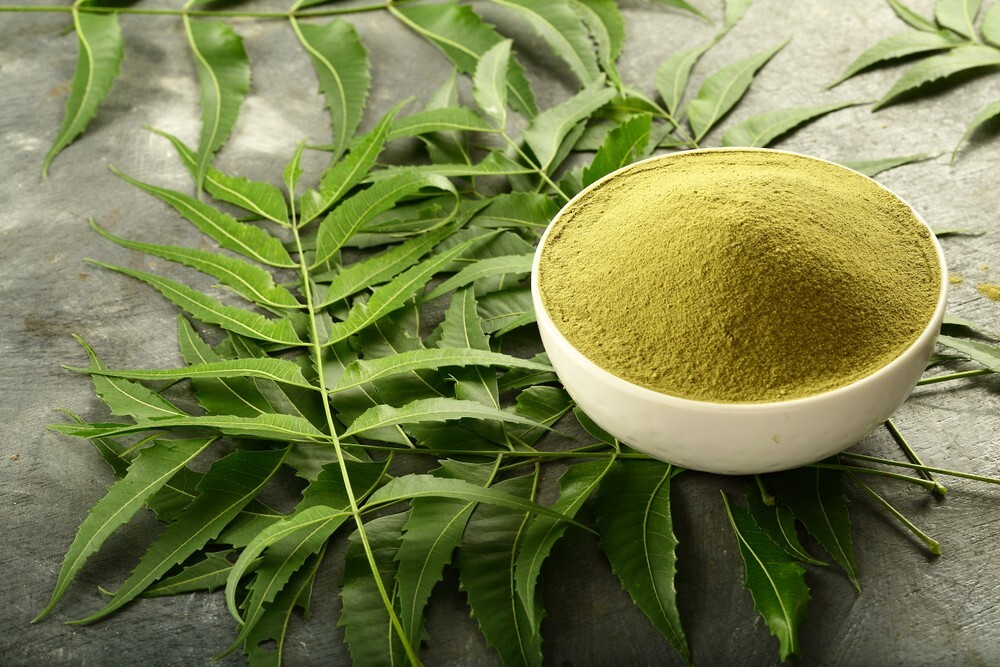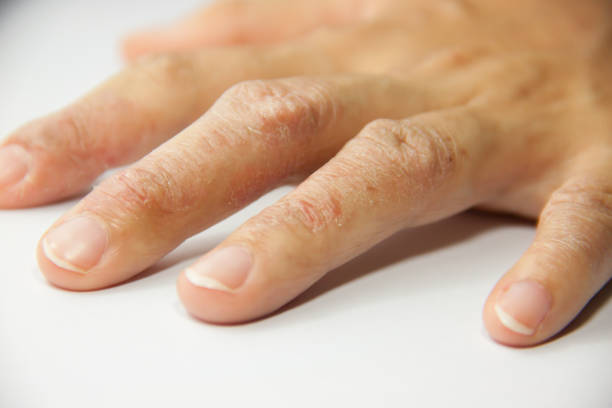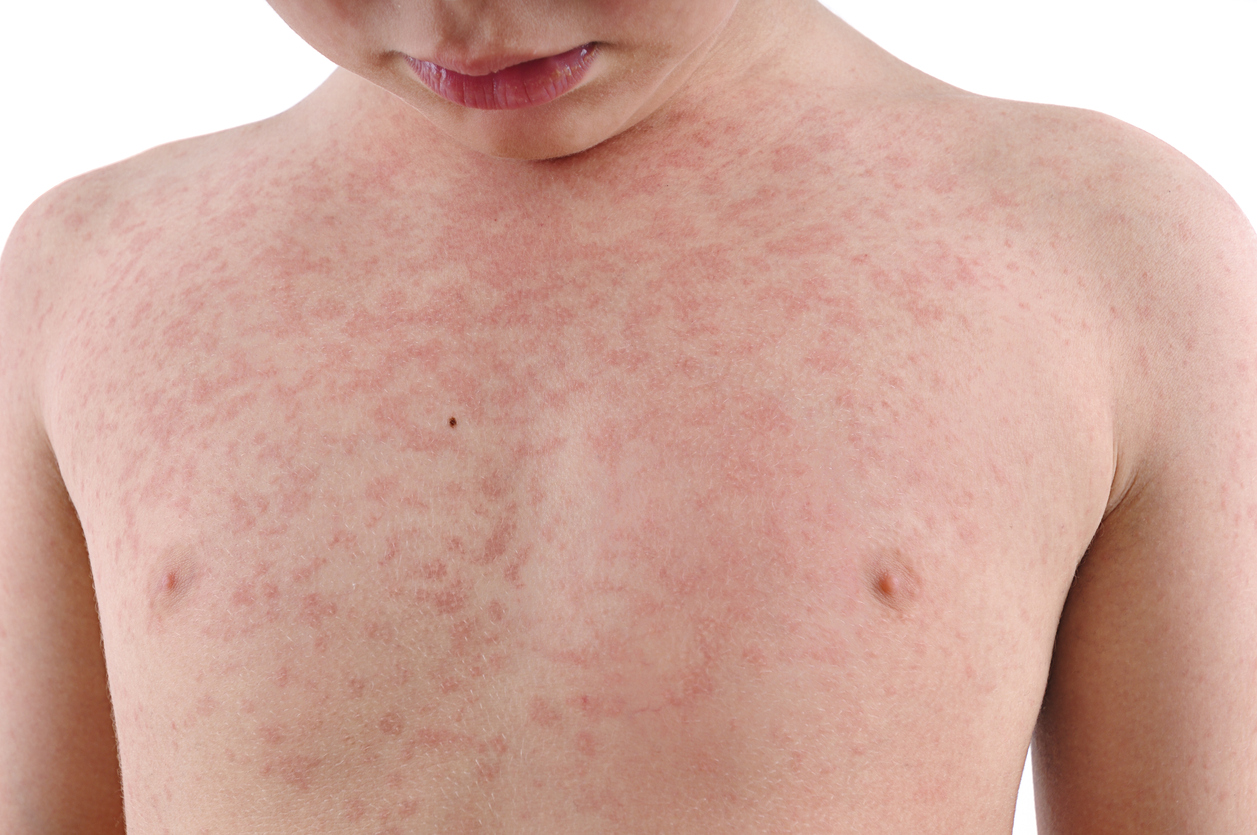Allergic dermatitis.
Root Cause of Disease
Most often, pet allergy is triggered by exposure to the dead flakes of skin (dander) a pet shed. Any animal with fur can be a source of pet allergy, but pet allergies are most associated with cats and dogs.
Symptoms
et allergy signs and symptoms caused by inflammation of nasal passages include:
- Sneezing
- Runny nose
- Itchy, red or watery eyes
- Nasal congestion
- Itchy nose, roof of mouth or throat
- Postnasal drip
- Cough
- Facial pressure and pain
- Frequent awakening
- Swollen, blue-coloured skin under your eyes.
- In a child, frequent upward rubbing of the nose.
Causes
Allergies occur when your immune system reacts to a foreign substance such as pollen, mold or pet dander. Your immune system produces proteins known as antibodies. These antibodies protect you from unwanted invaders that could make you sick or cause an infection. When you have allergies, your immune system makes antibodies that identify your allergen as something harmful, even though it isn’t. When you inhale the allergen or meet it, your immune system responds and produces an inflammatory response in your nasal passages or lungs. Prolonged or regular exposure to the allergen can cause the ongoing (chronic) airway inflammation associated with asthma.
Cats and dogs
Allergens from cats and dogs are found in skin cells the animals shed (dander), as well as in their saliva, urine and sweat and on their fur. Dander is a particular problem because it is very small and can remain airborne for long periods of time with the slightest bit of air circulation. It also collects easily in upholstered furniture and sticks to your clothes. Pet saliva can stick to carpets, bedding, furniture and clothing. Dried saliva can become airborne. So-called hypoallergenic cats and dogs may shed less fur than shedding types, but no breed is truly hypoallergenic.
Rodents and rabbits
Rodent pets include mice, gerbils, hamsters and guinea pigs. Allergens from rodents are usually present in hair, dander, saliva and urine. Dust from litter or sawdust in the bottom of cages may contribute to airborne allergens from rodents. Rabbit allergens are present in danger, hair and saliva.
Other pets
Pet allergy is rarely caused by animals that don’t have fur, such as fish and reptiles.
Home Remedies to treat Pet Allergy
Remedy – 1: Tulsi
Materials: Tulsi

Tulsi is proven to be the safest skin cream that can be used and the benefits are massive. Tulsi reflects on your skin when you consume it as well as apply it. This wonder herb is used to treat acne, skin infections, lighten dark spots and improve skin texture. Here is a list of benefits that tulsi does to your skin.
- Tulsi helps in skin brightening.
- Tulsi helps in curing acne face marks.
- Tulsi mixed with eggs and mixed can help in tightening skin pores.
- Tulsi helps in curing skin infections and any sort of skin allergies.
Procedure:
- Consume Tulsi leaves raw, plucked fresh from the plant, add it to your tea or make it out of it.
- Tulsi tea: To make tulsi tea, boil 1 cup of water and pour it over 1 tsp of fresh tulsi leaves, 1/2 tsp of dried tulsi leaves or 1/3 tsp of tulsi powder. Cover the water in a pot or mug and let it seep for 15-20 minutes. Then strain the leaves, add honey if desired and enjoy.
Remedy – 2: Neem
Materials: Neem

Neem is one of the most essential herbs used in Indian households to treat a lot of skin ailments, and itchy skin is one of them. Neem has anti-inflammatory and anti-microbial properties that helps soothe itchy skin. Bathing with neem water cures itching and rashes in children who get chicken pox or hand foot mouth (HFM) disease. Neem water bath is an ideal home remedy for itching in the whole body.
Procedure:
- For neem water bath, soak a handful of neem leaves in hot water for half an hour.
- Once lukewarm, take a bath with the neem water.
- You can also make a paste by grinding neem leaves with water.
- Apply the paste on the irritated skin. Wash once dried.
Product link: Neem
Remedy – 3: Aloe vera
Materials: Aloe vera

If general irritation is causing your rash, like from an allergy, aloe vera might work to soothe itching and inflammation. It might improve the appearance of the rash, too. However, proper studies are lacking to support its use over conventional treatments. Also keep in mind aloe vera can’t “cure” an allergic reaction.
Procedure:
Using aloe vera for any type of rash is pretty simple. Liberally apply aloe vera gel all over the area where you notice symptoms. Use products made of pure, 100 percent aloe vera to avoid introducing other allergens or ingredients that could further irritate your skin. Aloe vera gel takes a few minutes to dry. Let your skin absorb it completely before you put clothes on over the area. You can reapply the aloe vera gel every couple of hours to see whether it helps your symptoms. Twice per day should be enough to see results, if aloe vera is going to be effective for your particular rash.
Product link: Aloe Vera
Other Remedies
Mushrooms
In some cases, mushrooms can help people who have allergies. Mushrooms have a compound called beta-glucan which possesses strong immune-modulating properties. This element can change the immune response in allergies by binding to specific immune cells. Some good mushrooms which you can add to your diet include maitake, turkey tail, cordyceps, shiitake, and reishi.
Licorice
This herb you can easily find in markets and you can use it as your home remedy for the symptoms that are associated with the allergy to dogs. You can talk with your doctor about the best way to add licorice to your diet, so you will see improvements in your condition.
Vitamin C
This natural cure is a supporter of the immune system and a natural antihistamine.
Histamine is produced by the body in response to allergens. Those people who suffer from allergies should add high amounts of Vitamin C and Vitamin C–rich foods to their diets, so they can strengthen their immune system. Citrus fruits, like oranges, are high in this vitamin, so you can add them to your diet. But, Vitamin C is part of other tasty fruits and vegetables, such as strawberries, broccoli, kiwi, kale, and red peppers, so they can be part of your diet too. A strawberry and pear smoothie is a quick and refreshing drink that is rich in Vitamin C and it can help you to boost your levels.
Risk factors
Pet allergies are common. However, you’re more likely to develop a pet allergy if allergies or asthma runs in your family.
Being exposed to pets at an early age may help you avoid pet allergies. Some studies have found that children who live with a dog in the first year of life may have better resistance to upper respiratory infections during childhood than kids who don’t have a dog at that age.
Complications
Sinus infections
Ongoing (chronic) inflammation of tissues in the nasal passages caused by pet allergy can obstruct the hollow cavities connected to your nasal passages (sinuses). These obstructions may make you more likely to develop bacterial infections of the sinuses, such as sinusitis.
Asthma
People with asthma and pet allergy often have difficulty managing asthma symptoms. They may be at risk of asthma attacks that require immediate medical treatment or emergency care.
Preventions
The best way to prevent pet allergies is to avoid animals that trigger allergic reactions. You can also take antihistamines daily to help control your pet allergy symptoms and reduce your allergic reaction.
If avoiding pets isn’t possible, the following tips can help prevent symptoms or reduce the severity of your symptoms.
- Avoid petting, hugging and kissing pets. Try not to let them rub against you. Don’t allow them in your bedroom or on your furniture.
- Regularly brush and bathe your pets. Brush your pets outdoors. If possible, have someone who doesn’t have pet allergies brush and bathe them. Use a shampoo specifically designed for pets.
- Vacuum rugs, carpets and other surfaces regularly. It’s a good idea to vacuum at least twice a week. Use a microfilter vacuum bag to prevent pet dander from escaping. If possible, remove rugs and carpets. They can trap pet allergens in the fibers.
- Filter the air in your home. Use a high-efficiency particulate (HEPA) air filter to remove as many pet allergens as possible.



